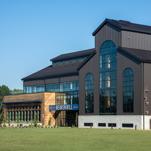Croatia Guide: Rijeka Reinvented
Photos courtesy of Zagreb Honestly
There may not be many virgin territories left. But there are places that reinvent themselves every few decades. The result? Visiting them feels like stepping into a new world. One such destination in Croatia is the city of Rijeka. This industrial and cultural jewel of the North Adriatic has a rich history and a vibrant buzz. It is home to 130,000 residents, but still an uncharted territory for foreign travelers.
This is all about to change as Rijeka becomes the 2020 European Capital of Culture (ECC). The designation will coincide with a host of exciting festivals and events. For now, let this seaport with a part Austro-Hungarian and part Italian flair entice you with its subtle charms.
Visiting Rijeka is like having a chat with a quirky party companion. Within moments, you will feel drawn in and compelled to peel one layer of its history after another. For example, you’ll find out how the city was always sandwiched between large empires and each wanted a slice of it. This meeting and clashing of powers made it into one of the most multicultural hubs of the Adriatic.
-

-

-

-

-

-

-

-

-

-

-

-

-

-

-

-

-

-

-

-

-

-

-

-

-

-

-

-

-

-

-

-

-

-

-

-

-

-

-

-











































